Annotation Comments
Using Annotation Comments
Annotation comments are a great way to asynchronously communicate about data and annotations. This allows for greater and more detailed feedback with the ability to place comments in specified areas and make replies.
Creating Comments
To create a comment, one simply has to right-click anywhere on the image, and a menu will appear with the option Add Comment, as shown below. A comment will be created at the specific location that was right-clicked.
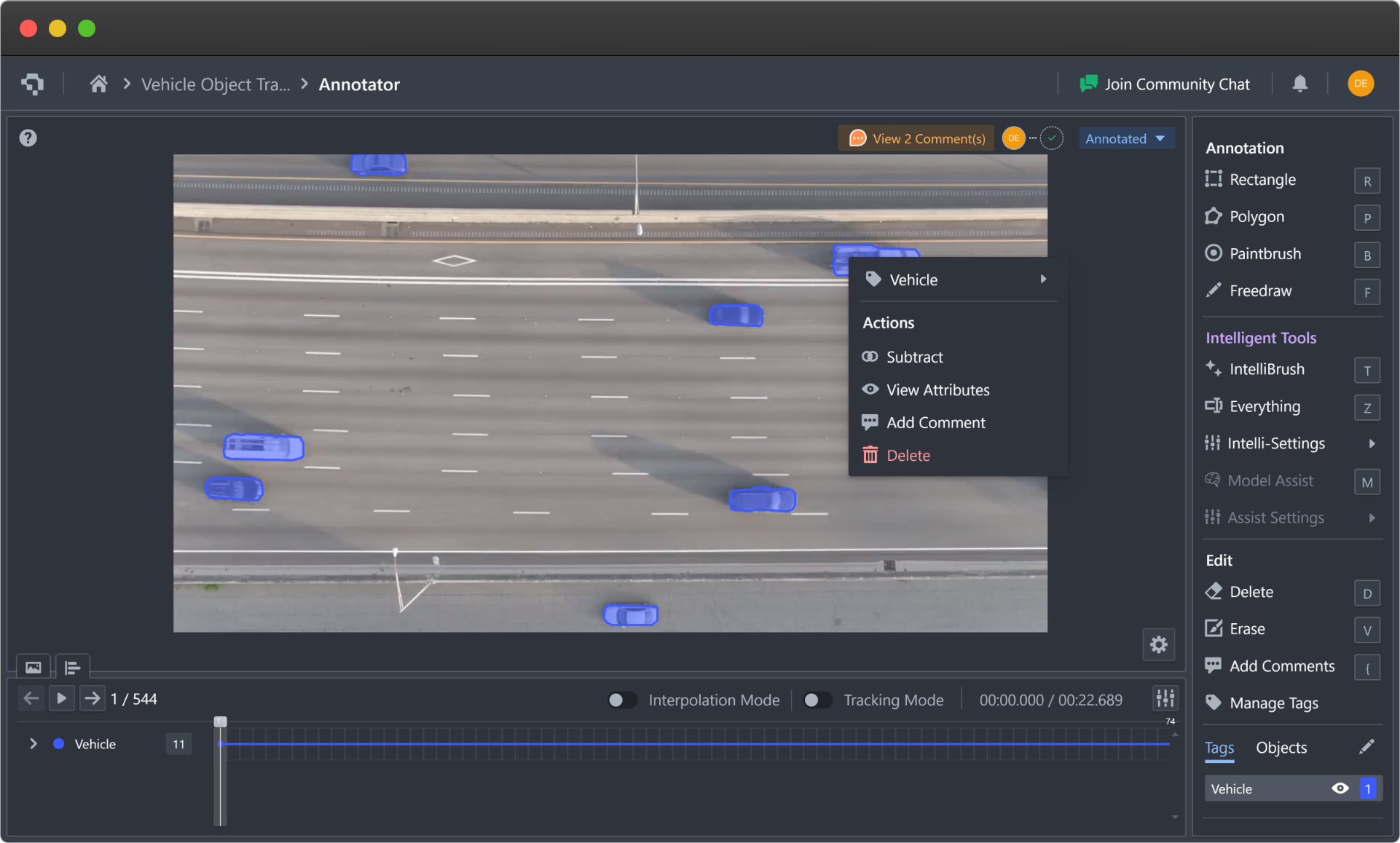
Now, the draft comment is open, and you can now type any text as long as it is within 1024 characters. Once you're done, you can click Comment.

The comment will now appear with a speech bubble, and the full dialogue will appear if you hover your cursor over, as show below:
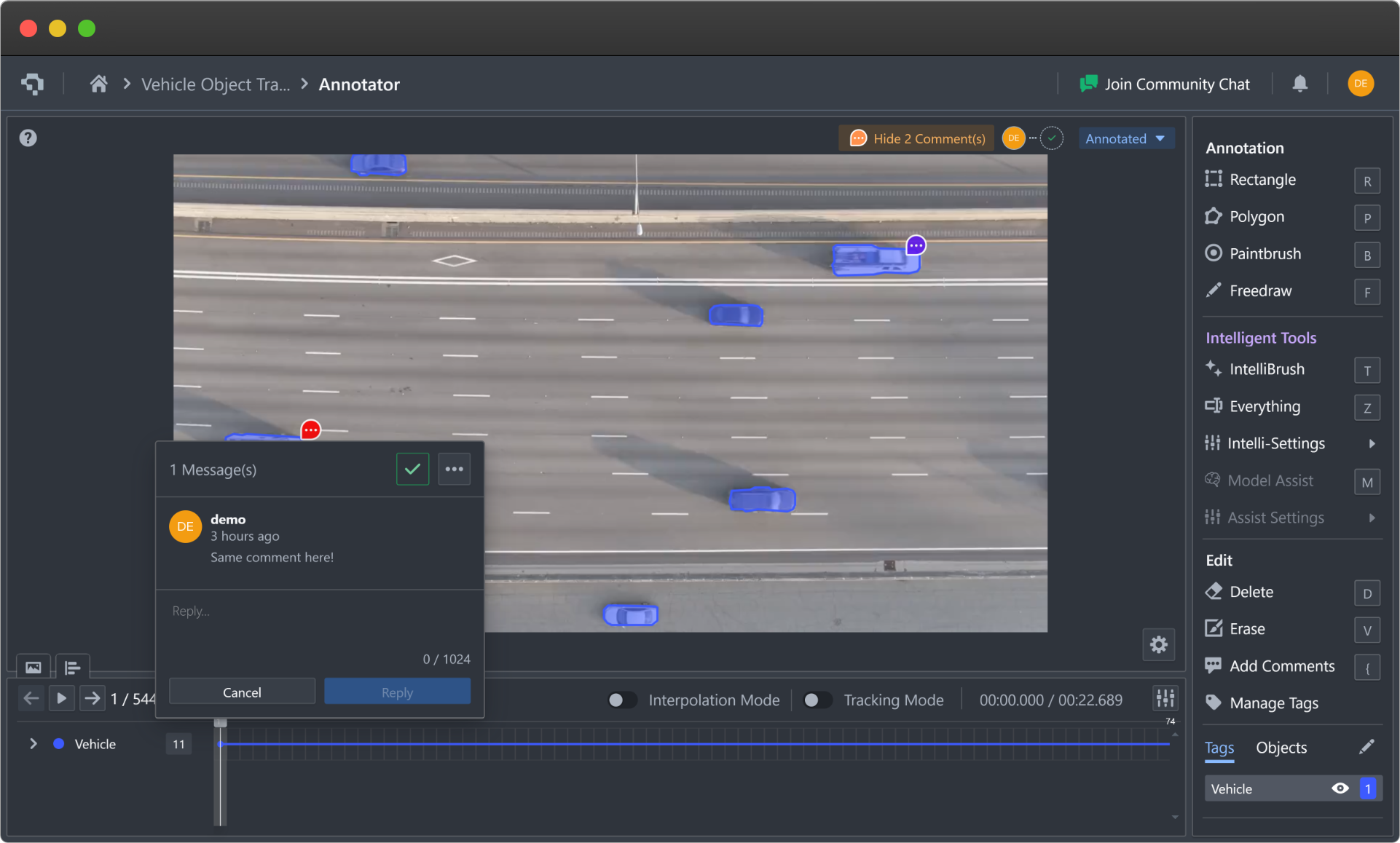
The comments are also visible to any other users who have access to the project, and they will be able to interact with the comment by replying to it or resolving it. They will not be able to edit the contents of your message.
Replying to Comments
To reply to comments, you should select the comment you want to reply to, and then type out your reply in the Reply box under the original comment.

Once you select Reply, you can see your reply chained below the initial comment. You will be able to continue to reply to the same chain in the same way.
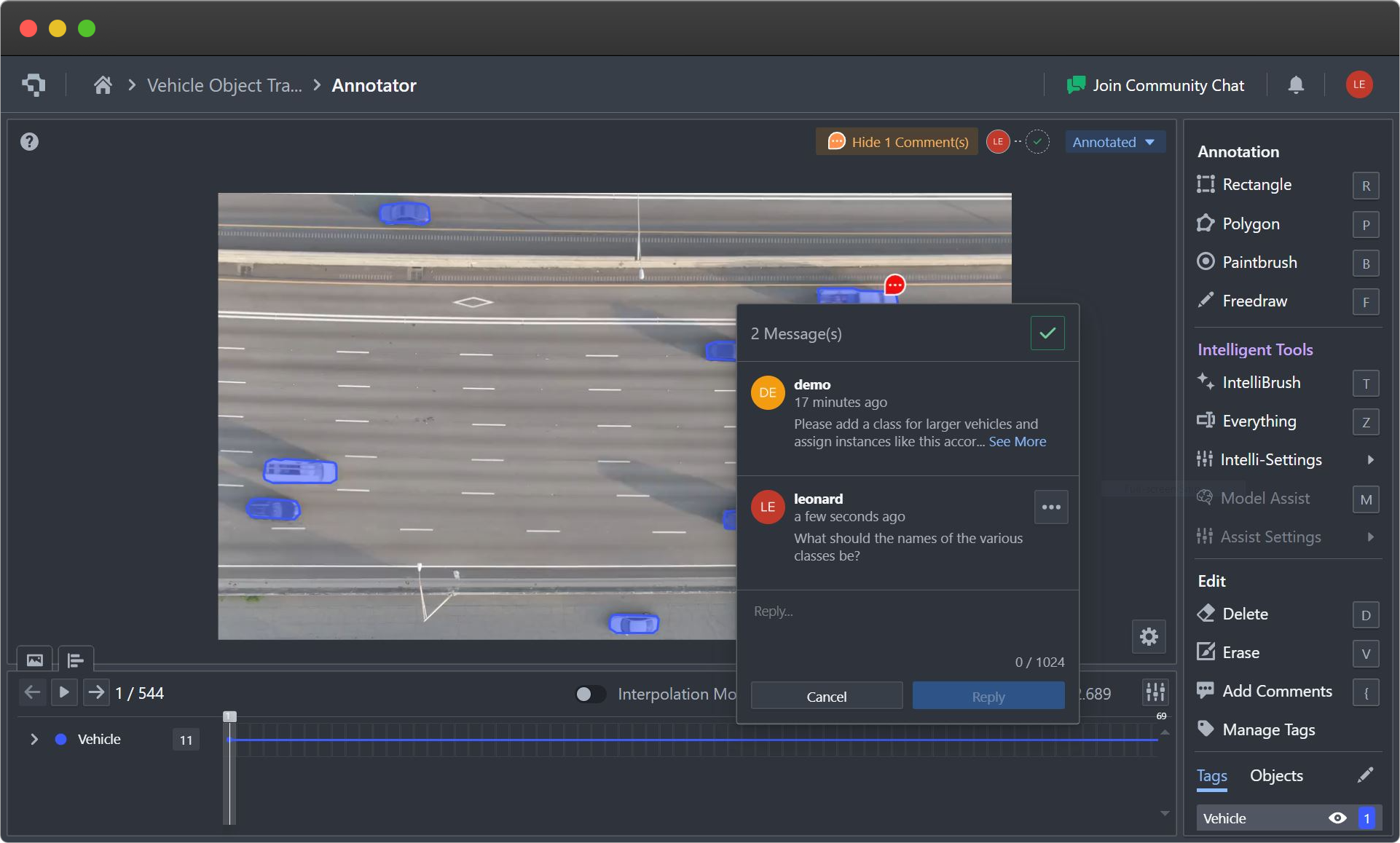
Editing/Deleting Comments
Users can edit any comments they made. To do so, they can select the ... button next to their comment, and then select Edit or Delete. Selecting Edit will allow users to change any content they want in the comment.

Showing/Hiding Comments
While useful, comments being displayed over the image can be distracting and even inhibit your ability to annotate well. To avoid this issue, you can select Hide_ Comment(s) at the top right corner. This will hide the speech bubbles and you can annotate as if there were no comments.

Once Hide 2 Comment(s) is selected, you will see the speech bubbles removed:
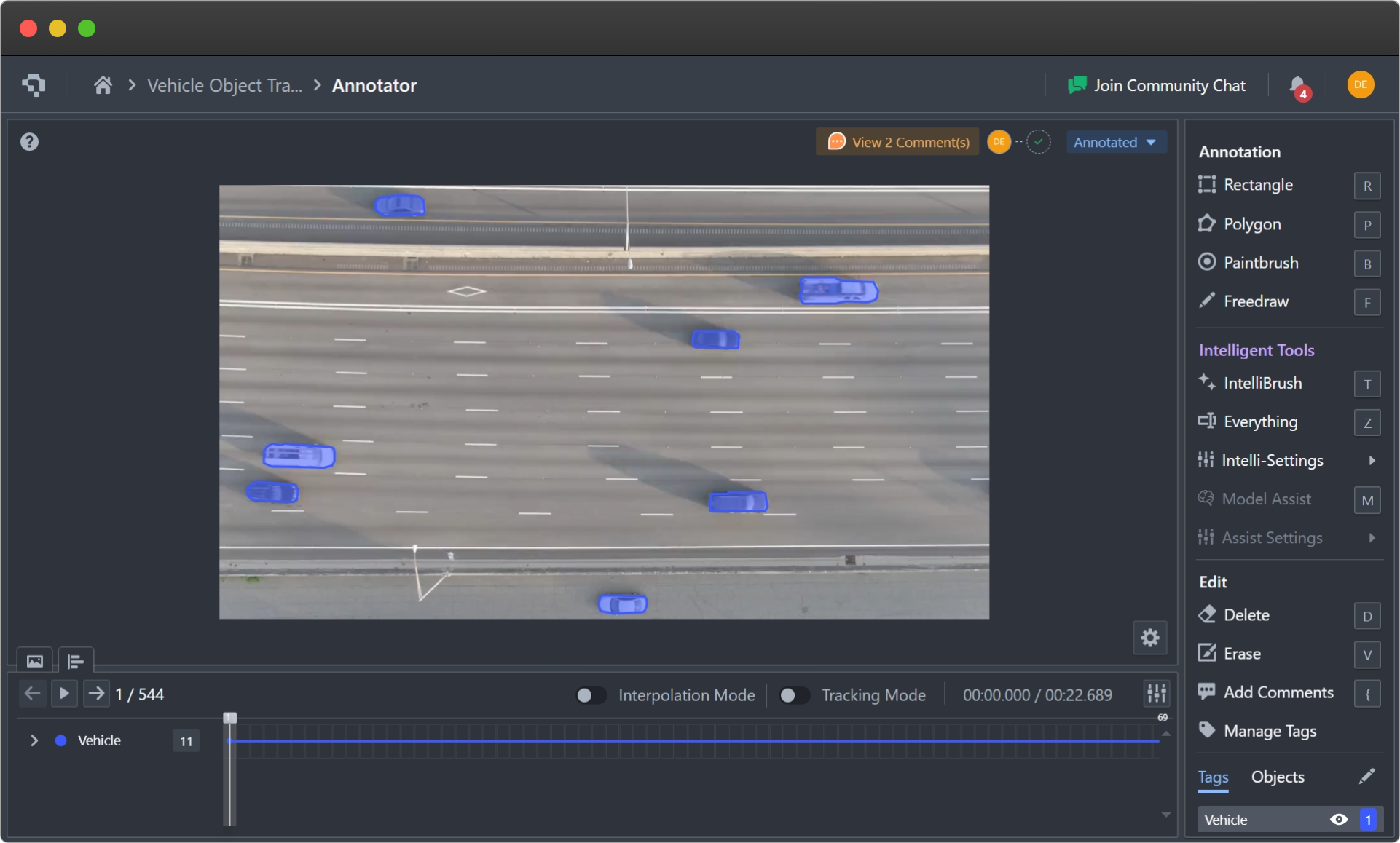
Resolving Comments
To resolve comments, you can select the comment and select the green check on the top right corner of the comment. Once selected, the whole comment along with any associated comment chains will be removed.
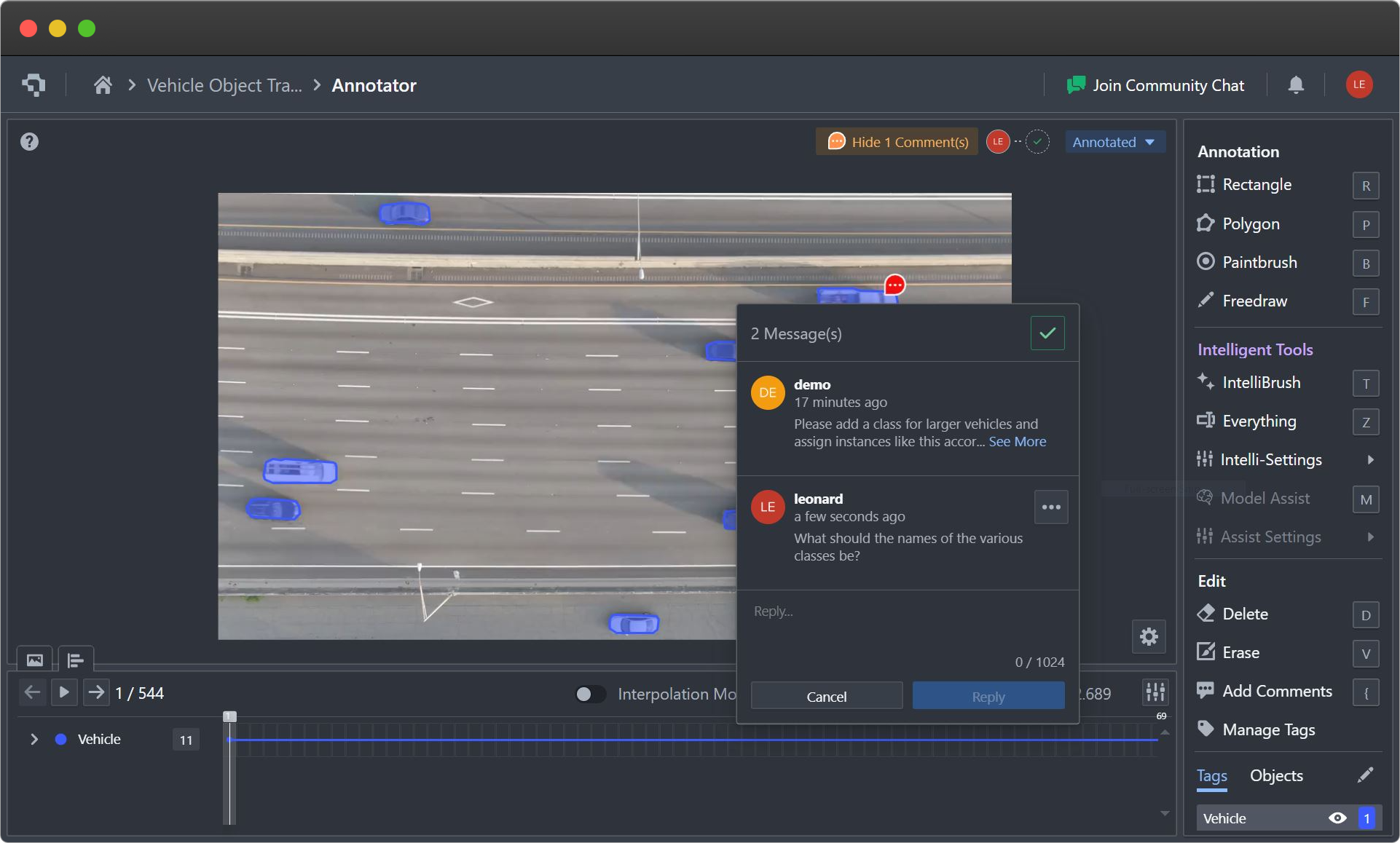
Common Questions
How many comments can be made on an image?
There is no limit to how many comments can be made.
👋 Need help? Contact us via website or email
🚀 Join our Slack Community
💻 For more resources: Blog | GitHub | Tutorial Page
🛠️ Need Technical Assistance? Connect with Datature Experts or chat with us via the chat button below 👇
Updated 4 months ago